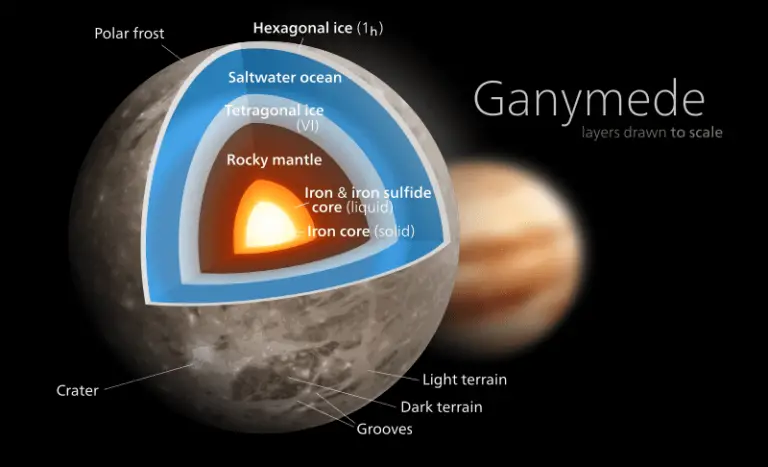Visible Light Spectrum, Wavelength and Frequency Explained
Visible light spectrum is the segment of the electromagnetic spectrum comprising of visible light and its component colors. Visible light wavelength is the distance between successive crests or troughs, and ranges from 4.2 × 10^-7 m to 7.8 × 10^-7 m. Frequency of visible light is the number of light waves that pass through a given point per second, and ranges from 4 × 10^14 to 8 × 10^14 Hz.
This article discusses visible light spectrum, wavelength and frequency, as outlined below;
-Visible Light Spectrum Definition, Properties, Parts and Importance
-Visible Light Wavelength Meaning, Range, Colors
Visible Light Spectrum Definition, Properties, Parts and Importance
Visible light spectrum can be described as the portion of the electromagnetic spectrum that can be detected with the human eyes [3].
Typically, the position of visible light with respect to other electromagnetic waves on the spectrum falls between Ultraviolet (UV) and Infrared (IR) waves, when arranged in order of increasing wavelength and decreasing frequency [4].

The attributes of the visible light spectrum depend on those of visible light rays themselves, which comprise the spectrum.
Properties of visible light rays are; velocity of 3 × 10^8 m/s, synchronous containment of multiple color bands, and capability of reflection, refraction, diffraction and absorption.
Parts of the visible light spectrum are the different color bands including; Red, Orange, Yellow, Green, Blue, Indigo and Violet (in order of increasing frequency and decreasing wavelength).
They are listed along with their wavelengths in the visible light wavelength section of this article.
Generally, the visible light spectrum is very important for various reasons, including its usefulness as a tool for therapeutic applications [1], and its role as a precursor to chemical bioenergy and biomass that are produced by autotrophic organisms in ecosystems, by the process of photosynthesis.
Visible Light Wavelength Meaning, Range, Colors
Visible light wavelength is the distance between two successive, corresponding points on a wave of visible light; such as between successive crests or troughs.
The wavelength range of visible light in meters is 4.2 × 10^-7 m to 7.8 × 10^-7 m (approximately 4.0 × 10^-7 m to 8.0 × 10^-7 m ). This is derived by multiplying the lower and upper limits of visible light wavelength (420 nm and 780 nm, respectively) by a factor of 10^-9.
There are seven colors in visible light, including red, orange, yellow, green, blue, indigo and violet (R.O.Y.G.B.I.V). These colors extend from one boundary of the visible light spectrum to the other, and travel with varying wavelengths and frequencies.
The color that has longest wavelength in the visible light spectrum is Red; meaning that it vibrates with lowest frequency and can penetrate materials to greater depths than other color bands.
The above attributes make red light suitable for non-invasive medical procedures, especially for skin treatment [2]. Because of its low frequency, red light has no ionizing effect on normal exposure, and carries very small amounts of thermal energy; so that it use for skin treatment poses minimal carcinogenic or injurious risk.
The range of human vision slightly extends outside the boundaries of visible light, backward by about 20 nm (that is; to about 380 nm).
This means that the upper extreme of ultraviolet radiation is detectable to the human eyes. However, this electromagnetic zone does not find much use in some of the important applications of visible light, such as photography.
Below is a table summarizing the different parts (color bands) of the visible light spectrum and their respective wavelengths;
Visible Light Color Band | Wavelength (nanometers; nm) |
Red | 620-780 |
Orange | 585-620 |
Yellow | 570-585 |
Green | 490-570 |
Blue | 440-490 |
Indigo | 420-440 |
Violet | 400-420 |
Frequency of Visible Light
Frequency of visible light is the time elapsed in the course of one full-cycle oscillation of a light electromagnetic wave, or the number of light waves passing through a given point in one second.
Visible light has a low frequency compared to other forms of electromagnetic radiation, and may be described as have a low energy intensity. This makes it less likely to ionize and alter chemical compounds like DNA; as is the case for high-frequency, ionizing radiation like X-rays and gamma rays.
The maximum frequency of visible light in hertz is approximately 8 × 10^14 Hz (equivalent to 800 THz. This frequency belongs to the violet color band, while red light has the lowest frequency.
Visible light frequency ranges from approximately 4 × 10^14 to 8 × 10^14 Hz, although an upper limit of 7 × 10^14 Hz is used in some studies.
Visible light frequency is an important quantity because it determines how much energy is carried in a wave-front of visible light, and how this energy affects objects in the light's path.
Below is a table showing the different color-components of visible light and their respective frequencies;
Visible Light Color Band | Frequency (Hertz; Hz) |
Red | 4.0-4.8 (× 10^14) |
Orange | 4.8-5.1(× 10^14) |
Yellow | 5.1-5.3 (× 10^14) |
Green | 5.3-5.8 (× 10^14) |
Blue | 5.8-6.8 (× 10^14) |
Indigo | 6.8-7.0 (× 10^14) |
Violet | 7.0-7.9 (× 10^14) |
Visible light has lower frequency than Ultraviolet, Gamma and X-rays; while having higher frequency than Infrared, Microwaves and Radio Waves.
Conclusion
The wavelength and frequency of visible light are two crucial parameters that determine the characteristics and possible uses of this type of electromagnetic radiation.
Visible light wavelength ranges from 4.2 × 10^-7 m to 7.8 × 10^-7 m on average; while its frequency ranges from 4 × 10^14 to 8 × 10^14 Hz.
The following table shows approximate wavelength and frequency values for visible light;
Visible Light Color Band | Wavelength (nanometers; nm) | Frequency (Hertz; Hz) |
Red | 620-780 | 4.0-4.8 (× 10^14) |
Orange | 585-620 | 4.8-5.1(× 10^14) |
Yellow | 570-585 | 5.1-5.3 (× 10^14) |
Green | 490-570 | 5.3-5.8 (× 10^14) |
Blue | 440-490 | 5.8-6.8 (× 10^14) |
Indigo | 420-440 | 6.8-7.0 (× 10^14) |
Violet | 400-420 | 7.0-7.9 (× 10^14) |
References
1). Garza, Z. C. F.; Born, M.; Hilbers, P. A. J.; van Riel, N. A. W.; Liebmann, J. (2018). "Visible Blue Light Therapy: Molecular Mechanisms and Therapeutic Opportunities." Curr Med Chem. 2018;25(40):5564-5577. Available at: https://doi.org/10.2174/0929867324666170727112206. (Accessed 17 April 2023).
2). Glass, G. E. (2021). "Photobiomodulation: The Clinical Applications of Low-Level Light Therapy." Aesthet Surg J. 2021 May 18;41(6):723-738. Available at: https://doi.org/10.1093/asj/sjab025. (Accessed 17 April 2023).
3). Jones, A. Z. (2020). "What Is the Visible Light Spectrum?" Available at: https://www.thoughtco.com/the-visible-light-spectrum-2699036. (Accessed 17 April 2023).
4). Lucas, J. (2022). "What is visible light?" Available at: https://www.livescience.com/50678-visible-light.html. (Accessed 17 April 2023).




